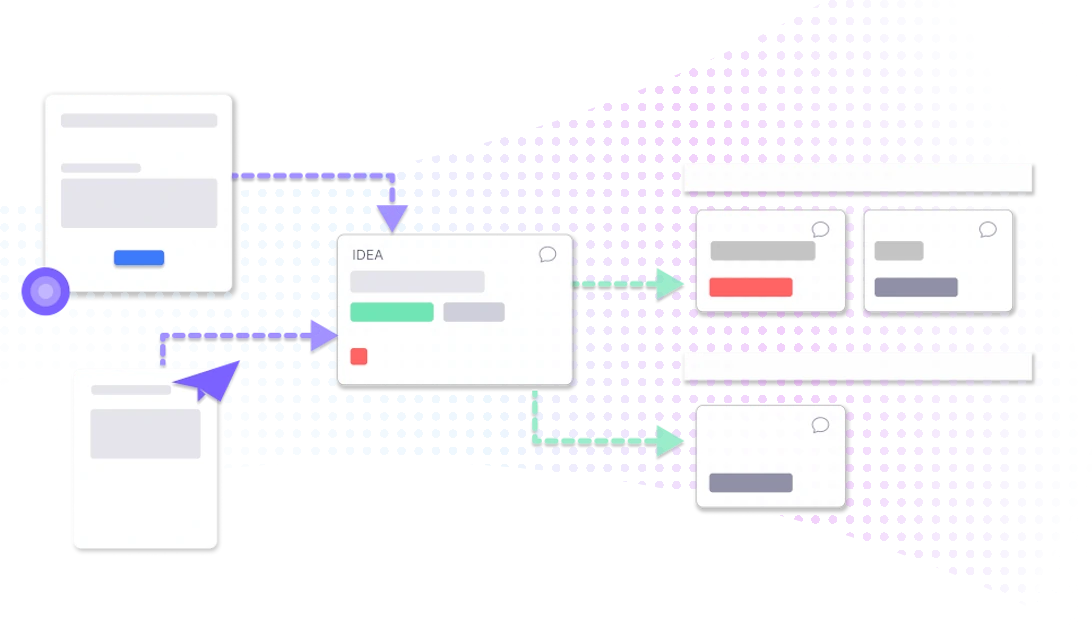Five ways to use a feedback board

Feedback boards are becoming increasingly popular for good reason, as they provide a very easy way to gather valuable information. They take minimal setup, and depending on your goals, may take very little time to manage. They are also very versatile and can be used in several different ways depending on your business needs.
Here are 5 different ways to use your board:
1. Customer Feedback
This is the most common use case and offers a lot of value to your business. A customer feedback board gives your customers a place to share feedback, ideas and frustrations about your product with you.
While you can sit back and wait for the feedback to pour in, this is also a great way to engage with your customer. By engaging with them, they will feel heard and valued, and you will learn more about your product from an outsiders view.
By engaging and learning about the use cases, you will be able to prioritize and plan your product roadmap. By listening and responding to customer needs, you can build a product your customers love and rave about.
Goals
- Gather customer feedback
- Engage with customers
- Prioritization of feature roadmap
2. Curated board
By moderating or curating your feedback board, your product team can validate or deep dive specific ideas. Often different customers will have similar ideas and a deeper dive can uncover the similarities and single solution that is needed. Without moderation, these ideas can become fragmented or lost.
Gathering feedback on the next new feature, and how it will be used is critical to understanding how your product is used. Building the wrong feature wastes time and resources, and a moderated feedback board can help wade through the many customer requests.
Goals
- Validate new features
- Understand use cases
- Prioritization of feature roadmap
3. Internal Team Feedback
Inside your company walls are a plethora of great ideas from people who care. Getting those ideas out is hard, following up on them is even harder. A central feedback board gets them noticed, and allows others who may have had similar thoughts to chime in.
An internal feedback board also helps break down walls between teams to increase collaboration. This type of feedback is also more accessible to employees that may not feel they have a voice, but can now share their thoughts.
Goals
- Gather employee feedback
- Increased collaboration across teams
- Encourage sharing of ideas from all levels of employees
4. Make your board public
Making your feedback board public increases visibility and transparency to your customers or potential customers. Much of business is about trust, and showing how you address and resolve issues will help build that trust.
This is also a place potential customers can see all the new features you have been adding. Seeing new features and a vibrant development cycle assures customers of the value they are getting.
Goals
- Show potential customers you are open to feedback
- Demonstrate how you are constantly adding value by adding features
- Transparency about issues and the resolution
5. Central Repository
Making your feedback board your central source for the ideas and feedback helps organize and capture this data across all your teams. This method gives your customer support a straightforward location to add feedback from support requests, and gives your product team a place to review or add ideas for validation.
Once the feedback is in the board, others will have the opportunity to add or assess the feedback. When issues are resolved, the board can act to close the loop with all customers at the same time improving customer experience.
Goals
- Close the loop on customer feedback
- Organize feedback into a central location from multiple sources
- Prioritization of feature roadmap
Embarkable: Turn feedback into action

Embarkable is a product management platform that connects customer feedback to product goals to help you decide what to build, and why. It lets you consolidate feedback from many different sources so that you'll have more confidence in what to build, and a stronger understanding of your customer needs. Spend less time searching for the right insight, more time building the feature that makes the customer happy, and drive your business forward.
In addition to building roadmaps and managing product launches, Embarkable allows you to monitor a single stream of incoming feedback to keep a pulse on what users are saying - something that would be much too time consuming to do manually. When you have different team members handling support or social media, Embarkable offers peace of mind because you'll know that critical feedback isn't falling through the cracks.